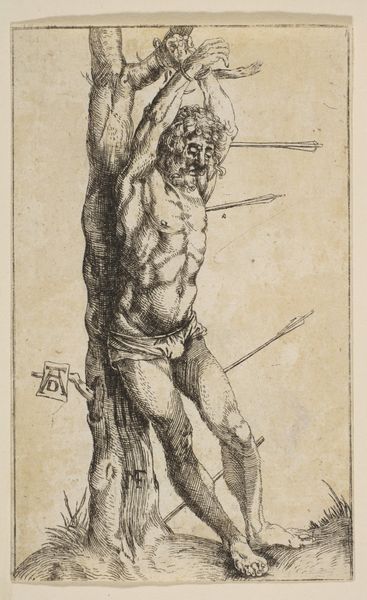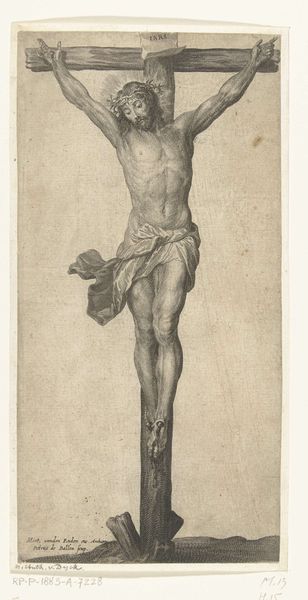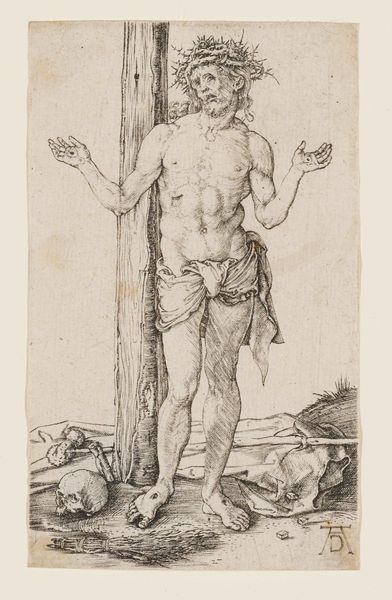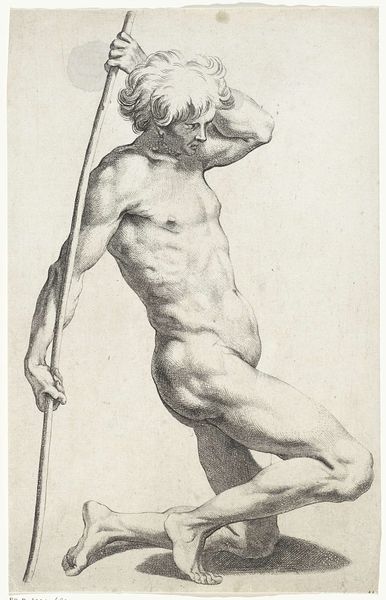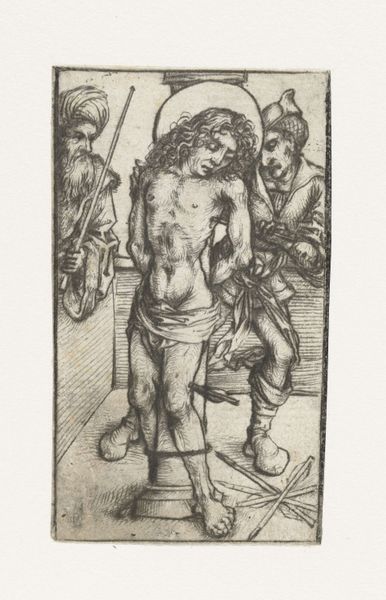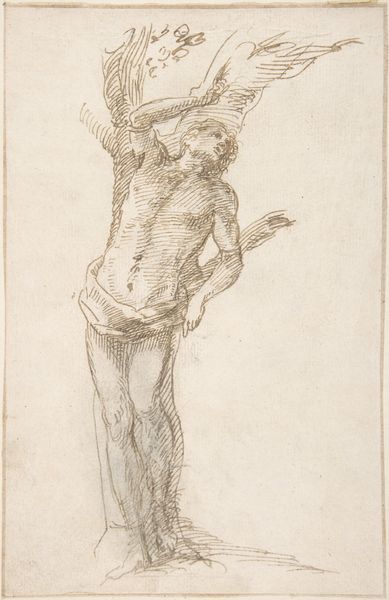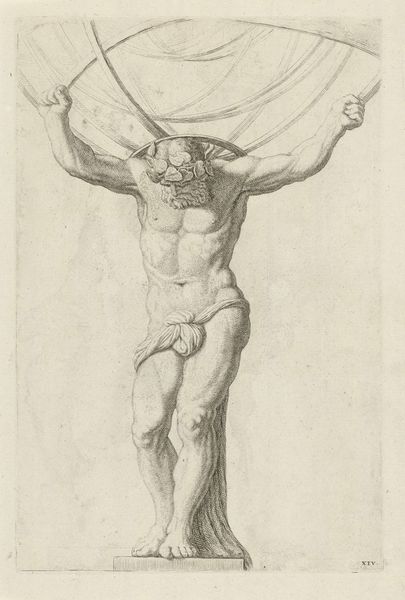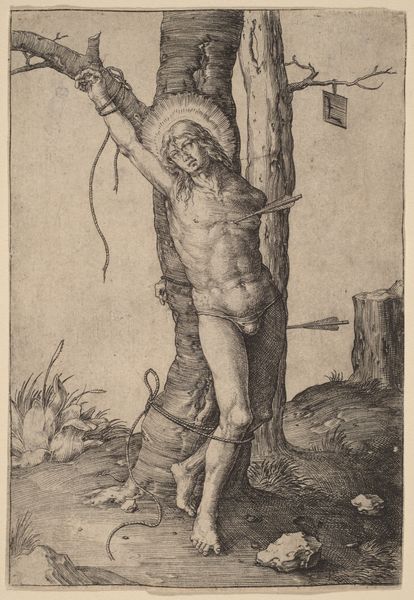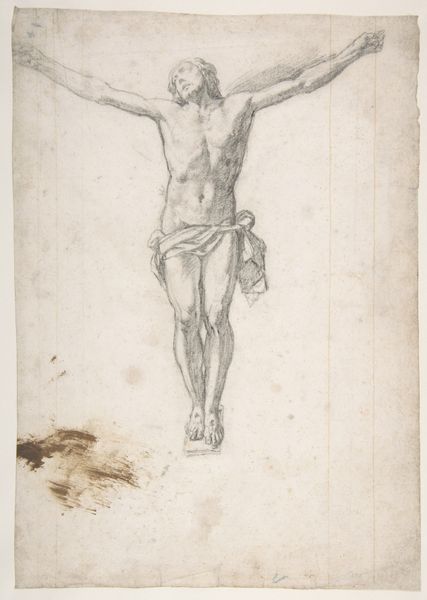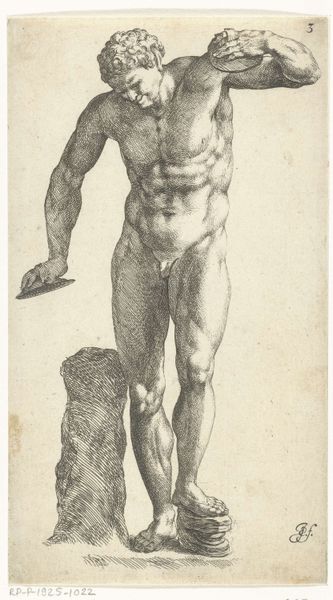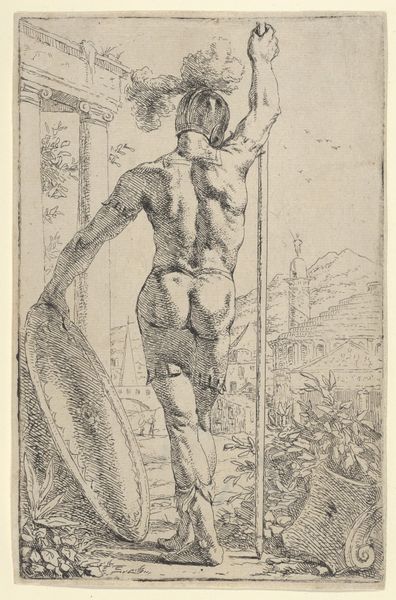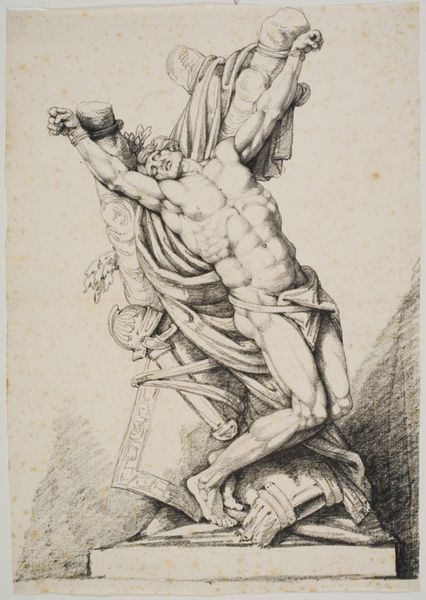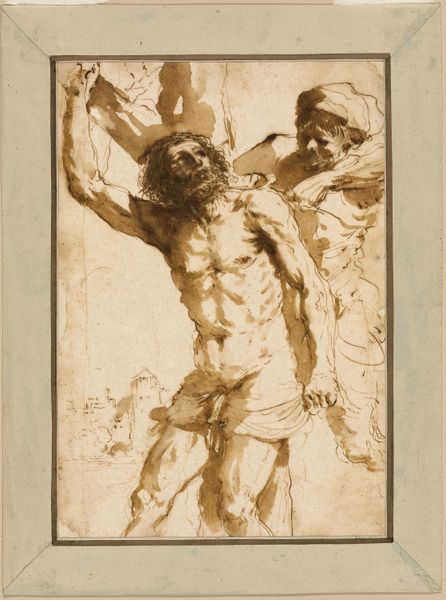
Dimensions: height 116 mm, width 71 mm
Copyright: Rijks Museum: Open Domain
Curator: This is Albrecht Dürer's "Saint Sebastian," an engraving dating from around 1499 to 1503. Editor: A grim scene, certainly. The texture of the tree bark contrasts dramatically with the smoothness of the saint's skin, emphasizing his vulnerability. The limited tonal range focuses the eye directly onto the pierced body. Curator: Indeed. Consider that during the late fifteenth and early sixteenth centuries, representations of Saint Sebastian were very popular, often commissioned during outbreaks of plague as he was invoked for healing. Images of suffering saints reinforced faith. Editor: Note Dürer's meticulous line work to delineate form and create depth. The network of lines used to depict the musculature gives the saint's body volume but also highlights the penetration of the arrows. The foreshortening is striking for the time. Curator: He’s tied quite uncomfortably, don't you think? The figure embodies an idealized human form marked by suffering which mirrored the viewers' own afflictions, giving spiritual succor and possibly influencing views regarding justice, governance, and faith within the Northern Renaissance milieu. Editor: Beyond the narrative, Dürer's deliberate use of hatching and cross-hatching demonstrates his masterful understanding of printmaking techniques. The spatial ambiguity, placing the figure close to us, enhances the immediate impact. There's no grand narrative beyond this central agony. Curator: Perhaps this stark focus on the martyr alone invited more personal introspection among viewers during an era defined by religious and social upheaval? That's quite speculative, but considering the socio-political mood of the period... Editor: Speculation is fun, but back to the aesthetic experience! It's clear the meticulous details amplify the emotional depth here; there’s raw emotion embedded within the formal mastery that I really value. Curator: Certainly, the engraving remains a testament to the artistic ingenuity through periods of substantial transformations within Europe, linking society with creative expression. Editor: I’ll think about that. It's interesting how a focus on craft allows us to still find this incredibly compelling after so many centuries, whatever its original societal impacts might have been.
Comments
No comments
Be the first to comment and join the conversation on the ultimate creative platform.
